Social Darwinism – the term actually – is hard to pin down as to its origins. Some sources say that it’s a knock against Darwin when his critics try to apply Darwin’s evolutionary biology to a contemporary social context, an application that Darwin never intended. Other sources say that SD should really be called “survival of the fittest” because the man who first proposed these SD ideas, Herbert Spencer, also coined the “survival” phrase. Regardless of its orgins, SD was used to deny aiding the massive number of poor folks by saying that the aid would be in violation of natural law, and that they should essentially be allowed to die. Being poor or unemployed was all your fault back then, and not the fault of an exploitative system or random chance or some other valid reason why you might be poor. On the flip side, people like John Rockefeller used SD in a business context to justify his ruthless tactics employed against his competition, that he was doing God’s will by eliminating weaker, wasteful oil refineries and taking over the dominant share of the oil business.
“Three generations of imbeciles are enough.” Supreme Court Justice Oliver Wendell Holmes, jr. from the 1927 SCOTUS case, Buck v. Bell, which approved involuntary sterilization laws around the country.
Eugenics was an ambitious, worldwide program that set about to eliminate the lowest tenth of the human population by restricting marriages and involuntarily sterilizing those who were considered to be “feebleminded,” petty criminals, epileptics, people with a family history of mental illness, “pauperism,” and alcoholics. The lowest tenth also included, in America, blacks, Jews, Mexicans, and immigrants from Eastern and Southern Europe. In many ways, this technique is akin to treating human beings like live stock and culling the weak to improve the gene pool. So, beginning in the 20th Century, with the help of such philanthropic giants as the Carnegie Institute and the Rockefeller Foundation, prominent eugenicists wrote and recommended sterilization policies that would become laws in 28 states by 1932. 60,000 Americans would eventually have their reproductive rights taken from them, though Eugenics enthusiasts sought to eliminate almost 14 million Americans 1.
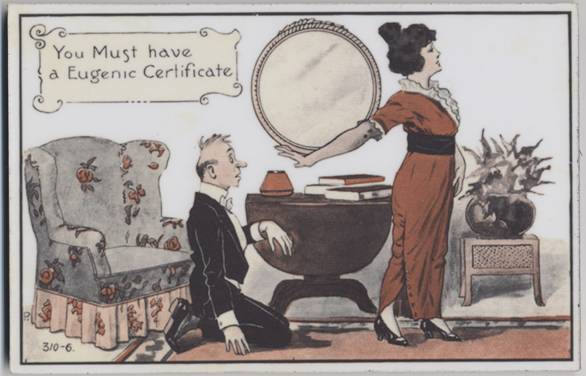
Eugenics actually originated with Charles Darwin’s cousin, Francis Galton, who drew conclusions from his examinations of prominent British families and inherited traits. An Italian physician named Cesare Lombroso added to this field of knowledge by stating “there exists…a group of criminals, born for evil, against whom all social cures break against a rock – a fact which compels us to eliminate the[se criminals] completely, even by death.” in 1874, an English doctor named Jugdale examined on inmates in a New York jail, especially six who were related. Jugdale discovered that these inmates’ family tree was “full of social deviants” 2. Primarily, Eugenicists felt that the desired human traits were those of successful white businessmen and women of Northern and Western European ethnicities. This categorization of positive and negative traits by the eugenicists was given additional confirmation in 1917-18 when almost 2 million men who were drafted into the U.S. Army were given an IQ and personality test. The justification at the time for such a broad sweeping round of tests was to find those who the most “insane, feebleminded, psychopathic and nueropathic individuals” and keep them out of front line service in World War 1 because of a new phenomenon named “shell shock” that incapacitated 15% of all soldiers in the war. 3 However, because the test results asked questions about elite and urban pop culture, the overwhelming majority of men from Western and Northern European backgrounds passed the test.4
:focal(2964x1642:2965x1643)/https://tf-cmsv2-smithsonianmag-media.s3.amazonaws.com/filer/76/80/7680a72b-8521-4c6c-b16f-4aaa932c36be/165-ww-479a-019.jpg)
Coupled with the influx of millions of new immigrants from different places like Eastern and Southern Europe and Asia, old stock Americans (WASPs) looked for reasons to restrict this flood of “an army of the unfit”. Americans were further influenced by the best selling book, The Passing of the Great Race by Madison Grant who sounded the alarm bells about the “superior” white race being overrun by an exploding population of the “inferior” races. So, America began passing laws that limited immigration from those parts of Europe – 1921’s Emergency Immigration (or Quota) Act placed a quota of just 3% of any group’s population based on the 1910 Census. In 1924, the national Origins Act went further by changing the quota to 2% and changing the Census date to 1890, adversely affecting the most recent additions to America. The 1924 law also restricted Asian citizenship as well.

Also, some of the country’s most famous philanthropic foundations, founded by Carnegie’s and Rockefeller’s money, funded eugenics research: “America’s first general-purpose philanthropic foundations — Russell Sage (founded 1907), Carnegie (1911), and Rockefeller (1913) — backed eugenics precisely because they considered themselves to be progressive. After all, eugenics had begun to point the way to a bold, hopeful human future through the application of the rapidly advancing natural sciences and the newly forming social sciences to human problems. By investing in the progress and application of these fields, foundations boasted that they could delve down to the very roots of social problems, rather than merely treating their symptoms. Just as tracking physiological diseases back to parasites and microbes had begun to eliminate the sources of many medical ailments, so tracking social pathology — crime, pauperism, dipsomania, and “feeblemindedness,” a catch-all term for intellectual disabilities — back to defective genes would allow us to attack it at its source. As John D. Rockefeller put it, “the best philanthropy is constantly in search of the finalities — a search for cause, an attempt to cure evils at their source.'” 5 These foundations were able to finance the work of the Eugenics Records Office which compiled data about human genetics and promoted the eugenics agenda across the nation between 1910 – 1939.
But, the worst part about the eugenics movement is that the American movement became the envy of the German National Socialist Party as they rose to power in the late 1920s. “The National Socialist Physicians League head Gerhard Wagner praised America’s eugenic policies and pointed to them as a model for Germany” 2. In fact, during the 1930s, both American and German eugenic scientists and programs exchanged information and praised each other as model programs for other like-minded countries to follow. Euthanasia of the insane was proposed in Alabama in 1936 if compulsory sterilization wasn’t enough to stop the increase in number coming into sanitariums. Even the inventor of the iron lung suggested that the insane be disposed of efficiently “in small euthanasia facilities supplied with proper gases” 2.
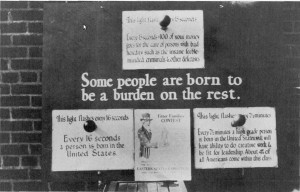 Though American eugenics programs did not have the depth or breadth that the Nazi eugenics program had (the Holocaust), compulsory sterilization laws were still in effect until the late 1960s and early 1970s. In fact, 60,000 doesn’t compare with 6 million or even 11 million if you count all of the victims of the Nazi genocidal machine.
Though American eugenics programs did not have the depth or breadth that the Nazi eugenics program had (the Holocaust), compulsory sterilization laws were still in effect until the late 1960s and early 1970s. In fact, 60,000 doesn’t compare with 6 million or even 11 million if you count all of the victims of the Nazi genocidal machine.
But that doesn’t minimize the fact that America is supposed to be a democracy that allows many freedoms and protects peoples’ rights, and during this sad history, the country and its states chose to interfere with peoples’ right to marry whomever they wanted and also to have children. When the laws of the land and the courts of the land uphold those immoral laws based upon bogus science, what recourse do the “weak” have? Isn’t that what the government’s job is – protect the less powerful from exploitation from those in power, in cases like these?
Questions: (PICK TWO OF THE THREE QUESTIONS)
1. Do states bear any responsibility for the compulsory sterilization laws that they had passed in the early part of the 20th Century? Why or why not? If so, what should be done for those surviving victims, especially the ones who are still alive who were sterilized in the 1960s or 1970s? If not, explain why those states don’t bear any responsibility.
2. Do you think the philanthropic organizations like Carnegie Institute or Rockefeller Foundation bear any responsibility in this mess? Why or why not? Explain.
3. Is it possible that the Human Genome Project could spur similar sentiments or feelings about fetal manipulation in order to create a healthier, more perfect child? Why or why not? (see this link for more info on the Project).
(300 words total after writing BOTH of your answers). Due Sunday, March 10, by midnight.
Sources:
1. Black, Edwin. War against the Weak: Eugenics and America’s Campaign to Create a Master Race. New York: Four Walls Eight Windows, 2003. Print.
2. Quinn, Peter. “Race Cleansing In America.” American Heritage Mar. 2003: 35-43. Web. 2012. <http://faculty.nwacc.edu/abrown/WesternCiv/Articles%5CEugenics.pdf>
3. https://www.smithsonianmag.com/history/first-personality-test-was-developed-during-world-war-i-180973192/
4. https://via.library.depaul.edu/cgi/viewcontent.cgi?article=1270&context=law-review
5. https://www.thenewatlantis.com/publications/philanthropys-original-sin
NPR’s story on North Carolina’s recommendation to provide assistance for the 2,000 survivors of NC’s eugenic’s program.
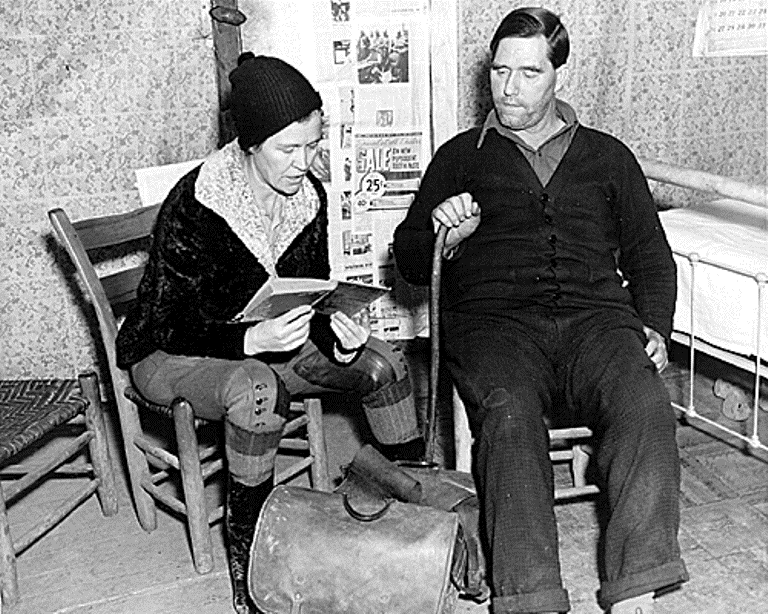


 The actors, Viggo Mortensen and Mahershala Ali feel that the movie has an understated power that just lets its characters interact in interesting and human ways.
The actors, Viggo Mortensen and Mahershala Ali feel that the movie has an understated power that just lets its characters interact in interesting and human ways.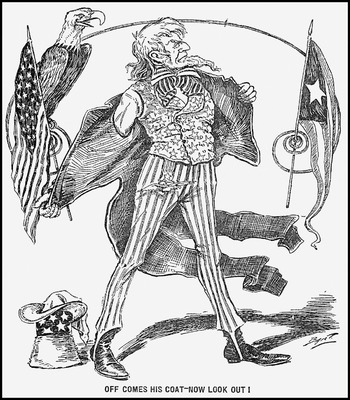




:focal(2964x1642:2965x1643)/https://tf-cmsv2-smithsonianmag-media.s3.amazonaws.com/filer/76/80/7680a72b-8521-4c6c-b16f-4aaa932c36be/165-ww-479a-019.jpg)

 Though American eugenics programs did not have the depth or breadth that the Nazi eugenics program had (the Holocaust), compulsory sterilization laws were still in effect until the late 1960s and early 1970s. In fact, 60,000 doesn’t compare with 6 million or even 11 million if you count all of the victims of the Nazi genocidal machine.
Though American eugenics programs did not have the depth or breadth that the Nazi eugenics program had (the Holocaust), compulsory sterilization laws were still in effect until the late 1960s and early 1970s. In fact, 60,000 doesn’t compare with 6 million or even 11 million if you count all of the victims of the Nazi genocidal machine.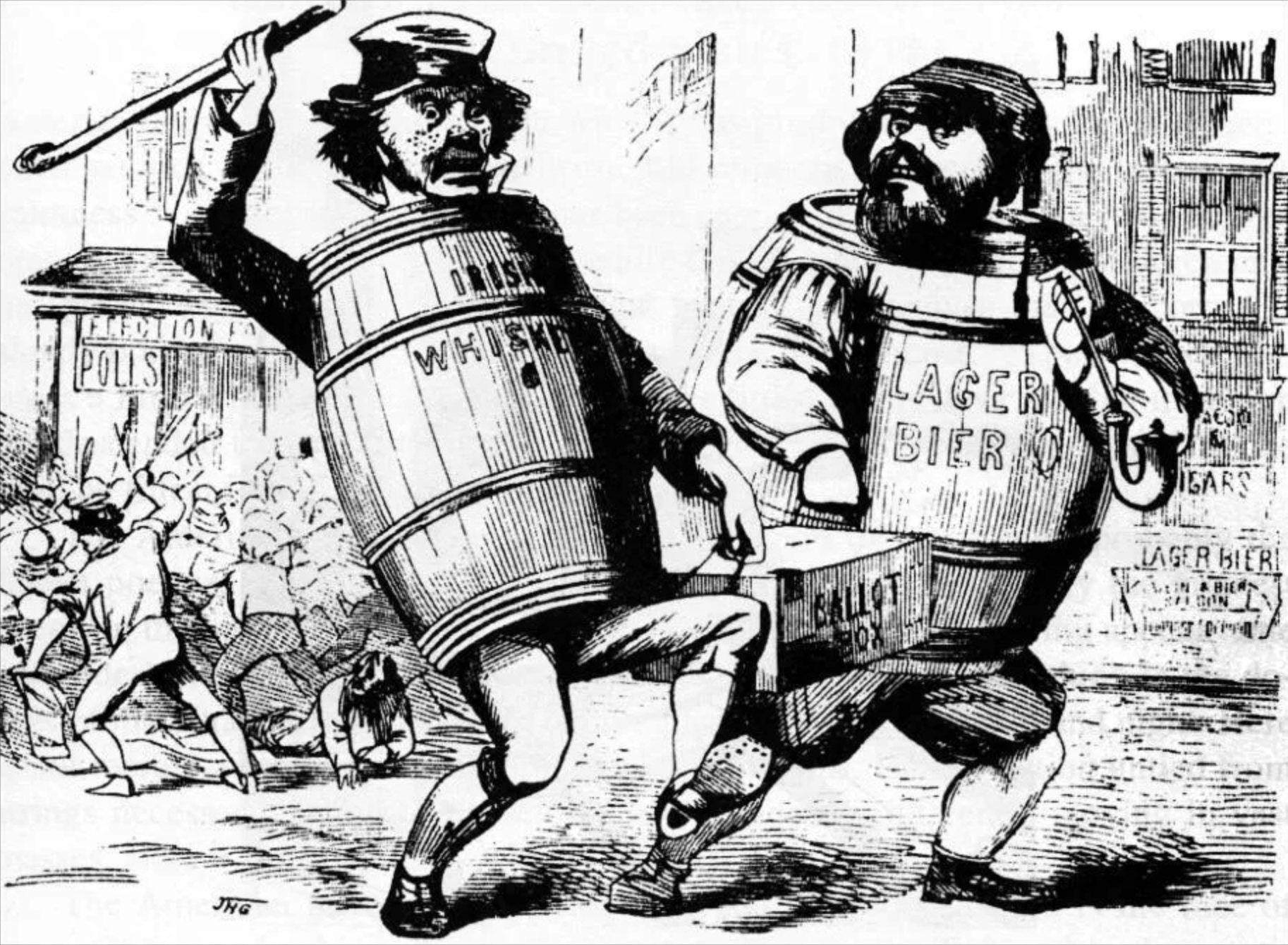
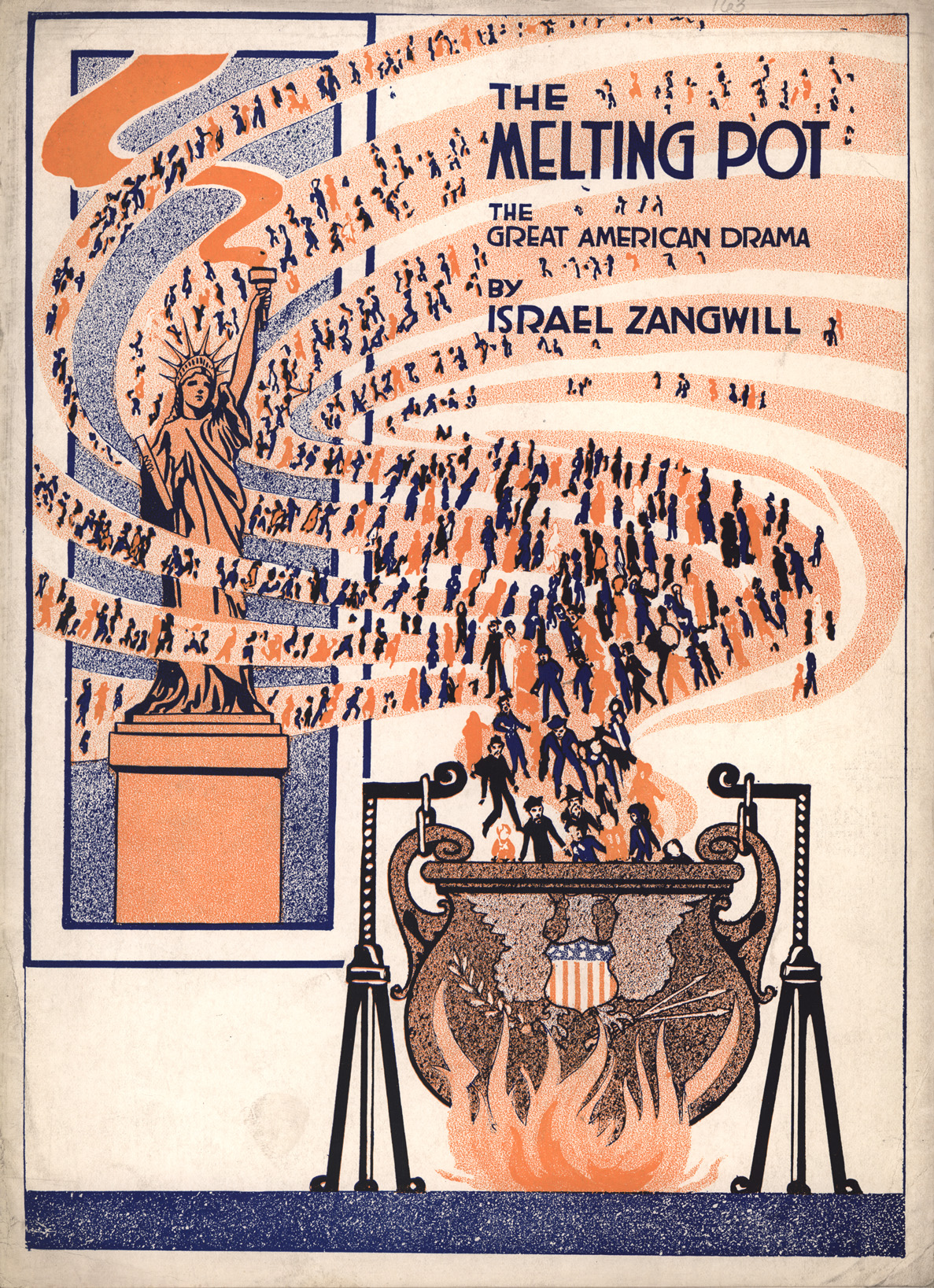 wrote a drama called (oddly enough) The Melting Pot in which a young Jewish immigrant / composer comes to America in order to complete a symphony about his amazing new country where all ethnic groups are united.
wrote a drama called (oddly enough) The Melting Pot in which a young Jewish immigrant / composer comes to America in order to complete a symphony about his amazing new country where all ethnic groups are united.



